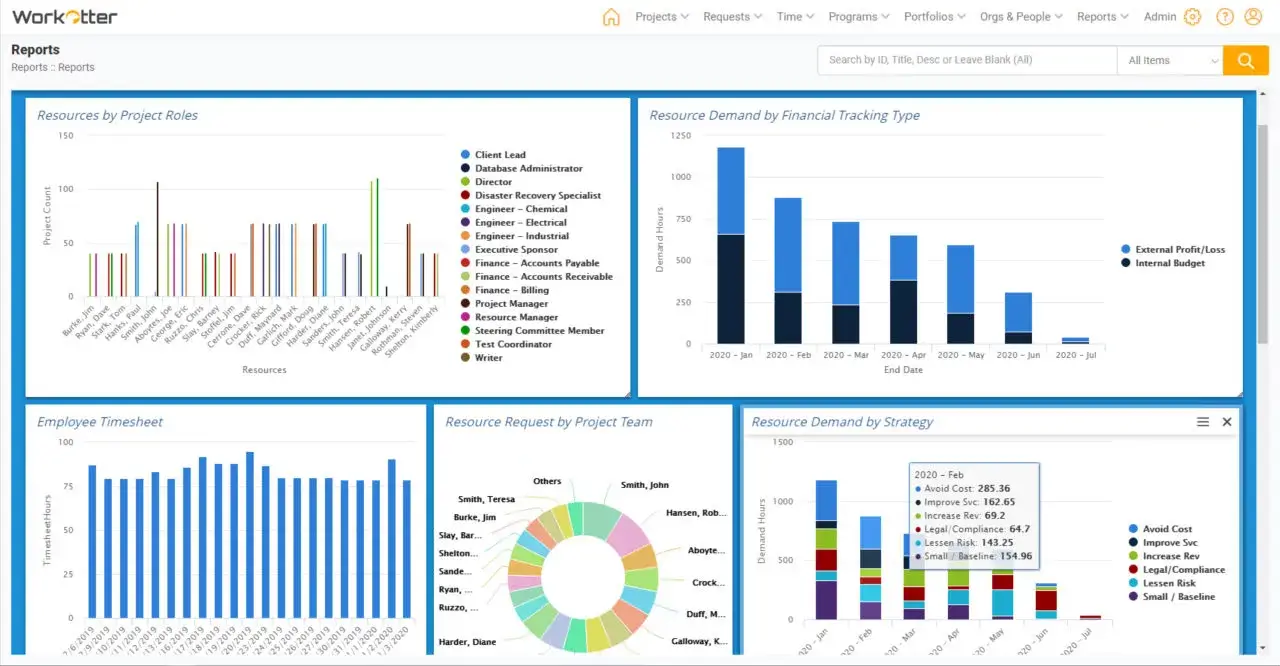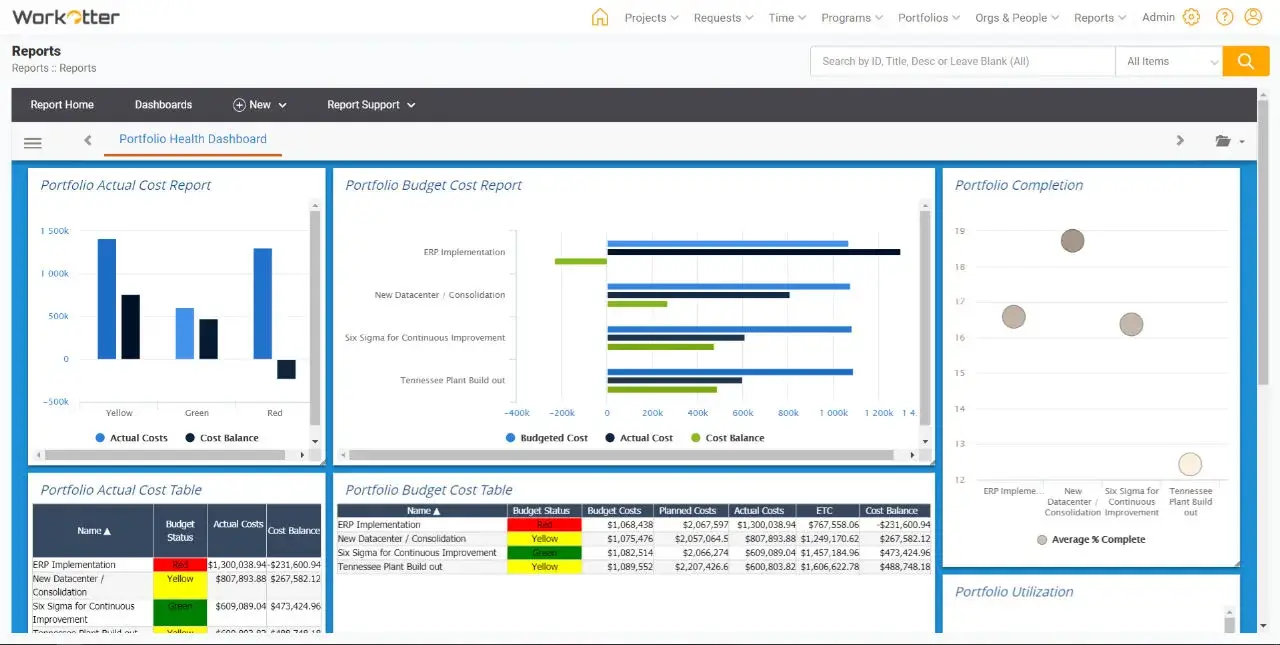TL;DR
Managing a project portfolio effectively means overcoming five key challenges: limited visibility into portfolio-wide data, misaligned strategic priorities, resource bottlenecks, governance overload, and unclear performance metrics. Addressing these allows PMOs to maintain focus, make informed decisions, and deliver real value.
Project Portfolio Management Roadblocks
Taking a strategic approach to the prioritization, management, and execution of projects is at the heart of Project Portfolio Management (PPM). As a company grows, aligning project performance and outcomes with organizational goals becomes more challenging. PPM provides a structure for organizations to plan and allocate resources efficiently, including budgets and staff. However, some issues complicate the successful management and execution of multiple projects, causing ppm implementation challenges. Getting ahead of these challenges is critical to realizing the benefits of every project and for the continued success of a Project Management Office (PMO).
Read on to explore the five biggest PPM challenges faced in the project portfolio management process and get insights into how organizations can overcome these problems to enhance business outcomes.
Key Project Portfolio Management Challenges
1. Lack of Alignment with Business Strategy
One of the main challenges in enterprise project portfolio management is ensuring that all projects are aligned with the organization’s overall business strategy. Too often, projects are undertaken without the organization understanding how they will benefit or the impact if they fail. The result? According to KPMG’s 2023 Technology Survey, 51% of the responding 400 US technology executives said they have seen no increase in performance or profitability from their digital transformation investments in the past two years. For enterprise players, this equates to millions of dollars in unrealized potential, wasted resource time, and potentially impacts other important initiatives tied to company goals.
2. Inadequate Resource Allocation and Capacity Planning
Managing resources (whether they are budget, staff, or technology) effectively across multiple projects is a recurring problem in PPM. And the larger or more complex the projects, the greater the challenges. Resource constraints can cripple a portfolio’s success.
3. Ineffective Risk Management
Risks are inevitable in project portfolio management, especially when overseeing multiple complex projects simultaneously. Many organizations, however, overlook risk management entirely or only address risk at a superficial level. Only focusing on individual project risks rather than portfolio-wide risks can lead to project delays, cost overruns, and even project failure.
4. Inconsistent Project Prioritization
One of the main benefits of PPM is the ability to move beyond doing project delivery well and maturing to doing the right projects and doing them well. Without a standardized framework for prioritizing projects, businesses may fund the wrong projects, resulting in work that offers minimal strategic value. Furthermore, prioritization may become subjective, influenced by internal politics or short-term pressures rather than long-term strategy.
5. Poor Communication and Stakeholder Engagement
A lack of ongoing communication between the PMO, project managers, executives, and stakeholders can lead to disconnects in expectations, project progress, and resource needs. Despite the best efforts of the PMO, one of the main project portfolio management disadvantages is when stakeholders are not adequately informed or engaged in the project lifecycle. A lack of inclusion can lead to project delays, budget overruns, and diminished support for the project’s outcomes.
How to Overcome Project Portfolio Management Challenges
Lack of alignment:
Overcoming a lack of alignment requires organizations to prioritize strategic planning at every level. The Project Management Office (PMO) should be deeply involved in that align with the portfolio’s composition. Regular collaboration between executives, portfolio managers, and project teams might take the form of status updates, tailored reporting, and meetings, and will ensure a constant focus on strategic objectives.
Poor Resource Allocation and Capacity Planning:
Accurate resource allocation and capacity planning are best done with tools that track resource usage and availability in real time and should be integrated into the PPM processes and systems. A mature PMO will forecast resource needs based on project scope and timelines, staying prepared for change and reassigning resources when priorities inevitably shift. Effective support from senior management and project stakeholders is critical in resolving conflicts over limited resources, ensuring that projects with the greatest strategic importance receive priority.

(PPM with integrated resource management provides visibility into current staffing and capacity for new staffing demands)
Inability to strategically assess risk
Implementing a robust risk management strategy is a critical element to successful PPM. Businesses should identify risks and categorize them according to their potential impact on the portfolio. The PMO should establish a proactive framework to monitor risks continuously and provide strategic support in mitigating them. Regular portfolio reviews should assess how risks at the project level may influence the broader portfolio and develop contingency plans accordingly.
No project prioritization process
Project prioritization must be based on clear criteria that align with the organization’s strategic objectives, such as return on investment (ROI), risk, business impact, and resource availability. The PMO should play a critical role in establishing a transparent and objective prioritization framework to ensure clear visibility into why certain projects are selected over others. Again, regular portfolio reviews will allow for dynamic reprioritization of projects as business needs evolve keeping project porfolios agile and adapting to shifting conditions.
Communication Issues
A clear communication strategy ensures regular updates and feedback loops between all stakeholders. This might include using project management tools that offer real-time dashboards and progress tracking, ensuring visibility across all projects. The PMO should focus on establishing clear project governance that provides a baseline for expectations. Holding stakeholder meetings, providing status updates, and determining clear channels for escalating issues will all support greater collaboration and transparency.
Manage & Optimize your Project Portfolio with Prism PPM!
Ready to see how Prism PPM’s project portfolio management solution can help you get better results across every project through efficient resource management, better project controls, and reports that inform everyone from project teams to executive stakeholders? Let us show you how! Get a demo or download the Buyers Guide
Real-life Examples of PPM Challenges
While every business is different, there are many common themes when it comes to Project portfolio management problems and how to solve them. Here are a couple of real-life examples from actual Prism PPM customers.
Too often, high-priority projects are understaffed, while low-impact projects consume disproportionate resources. A study by the Resource Management Institute (RMI) found that effective resource allocation can improve project success rates by 15% and reduce project costs by 10%. A retail company using Prism PPM addressed their misallocation of resources by implementing a resource prioritization matrix within their PMO, which helped them better align resources with strategic priorities, ultimately increasing their project success rates by 18%.
Ensuring the right projects are done, and done well, is challenging at any time. During the global pandemic, a state health department was tasked with consolidating departments and staff while initiating mission-critical projects. Using Prism PPM, the new PMO leader was able to gain a complete picture of resources and projects, prioritizing the mission-critical projects needed to deliver for their constituents.
Read the full case study.

(Project prioritization is an ongoing process and requires visibility into project health, timeline, and financials)
Future Trends in PPM
The last few years have seen a rapid adoption of project management solutions, fueled by the need to enable a distributed, remote workforce to work together to accomplish projects. Collaborative Workforce Management (CWM) solutions like Monday.com and Smartsheets have been adopted by organizations needing simple task management and reporting capabilities. This, however, is not the direction most PMOs will take when looking to the future of PPM management.
For PMO leaders and the organizations they work for, the future of PPM will be in three key areas:
- Data-driven decisions: in this article, we noted alignment with KPIs as a challenge for effective PPM. This problem only becomes larger if companies do not prioritize data collection and analysis at every stage of project and portfolio management. Smart organizations will empower their PMO and their executives with the tools that drive better outcomes.
- Strategic resource management: as skills become more specific and talent harder to find, ensuring you have right-fit teams to get work done will be critical. Capacity planning and talent retention will be two key factors to address.
- AI-driven efficiency: despite the many predictions that AI will decrease the importance of the PM role, the truth is that the right AI will enable PMs to focus more on work that adds value like risk management. With AI built into PPM tools, teams become more efficient and formerly tedious tasks like assembling status reports become automated
Summary
Project Portfolio Management is essential for modern organizations seeking to align their projects with business strategy while optimizing resources and mitigating risks. However, it is not without its challenges. Misalignment with business goals, poor resource allocation, inadequate risk management, inconsistent prioritization, and ineffective communication are among the top hurdles that can undermine a portfolio’s success. Understanding what problems can occur with a project portfolio management system will help diagnose the challenges that your organization faces, and address them quickly.
A well-structured PMO, with a clear, consistent PPM framework and strategic support throughout the organizationcan will better navigate these challenges. With focused planning and an emphasis on continuous improvement, businesses can ensure that their project portfolios are driving value and contributing to the realization of strategic objectives. Overcoming common PPM challenges can provide a significant competitive advantage, enabling organizations to deliver projects successfully while staying aligned with their long-term vision.
Prism PPM is here to help you understand your choices for Project Portfolio Management.
Our Buyer’s Guide breaks down the various options in the software marketing and provides checklists to help with needs assessment and vendor selection.
We are also available to show you how Prism PPM can help you improve your project outcomes, empower your PMO, and align every project with organizational goals.
Book a demo with us to learn more.